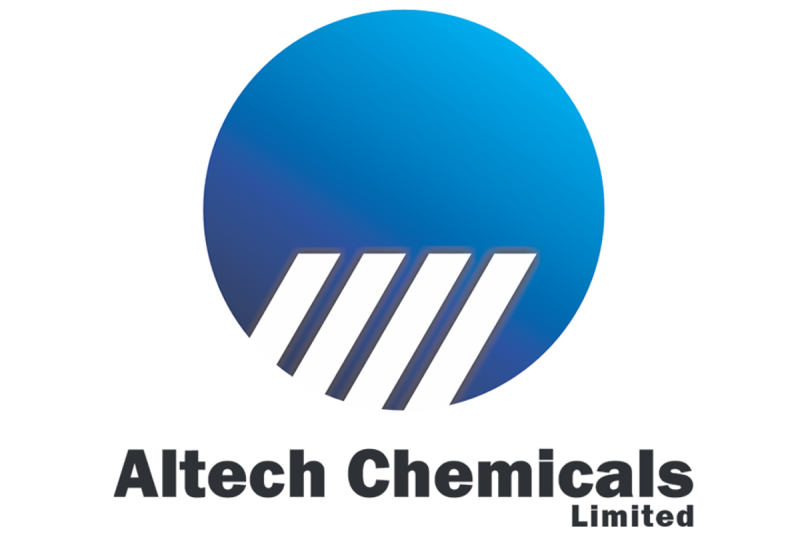
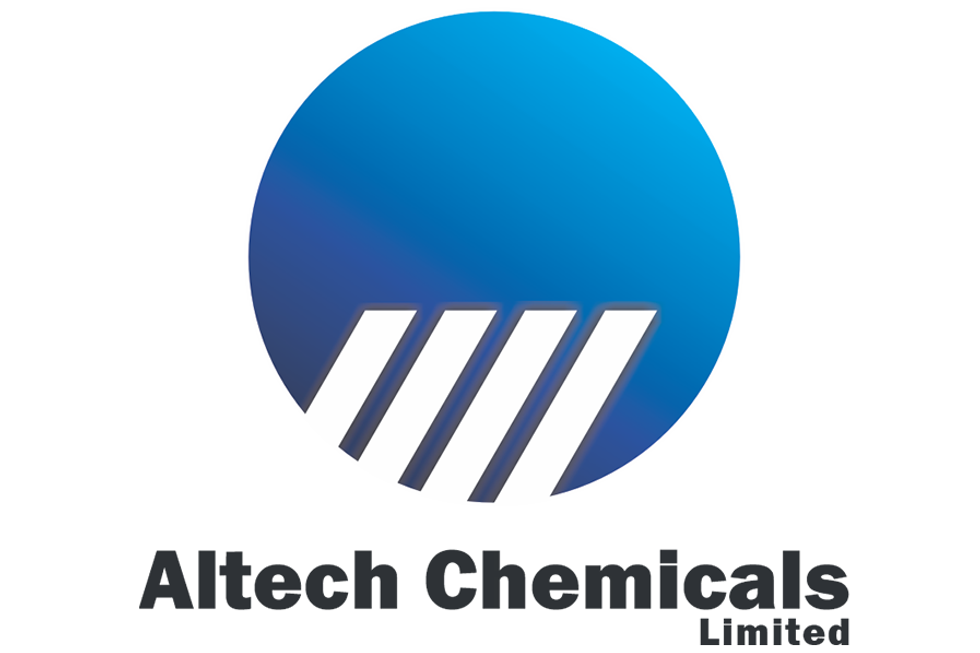 Altech Batteries (ATC:AU) has announced Altech – Board and Management Changes
Altech Batteries (ATC:AU) has announced Altech – Board and Management Changes
Download the PDF here.

 Altech Batteries (ATC:AU) has announced Altech – Board and Management Changes
Altech Batteries (ATC:AU) has announced Altech – Board and Management Changes
Download the PDF here.
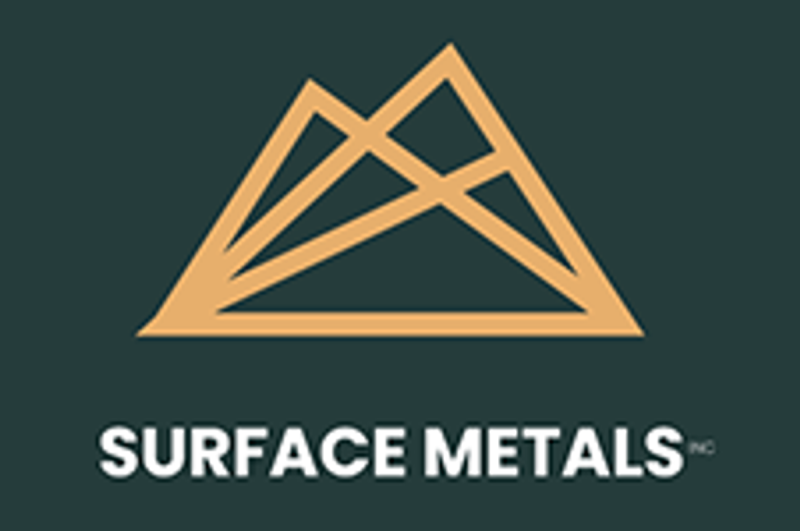
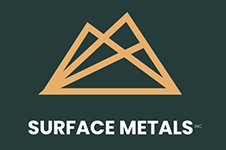
Surface Metals Inc. (CSE: SUR,OTC:SURMF) (OTCQB: SURMF) (the ‘Company’, or ‘Surface Metals’) announced today that the Company has closed a first tranche of its non-brokered private placement financing, previously announced on October 20, 2025. The Company issued 1,600,000 units (the ‘Units’) at $0.20 CAD per Unit for aggregate gross proceeds of $320,000 CAD.
Each Unit is comprised of one (1) common share and one-half of one (1) transferable common share purchase warrant, with each whole warrant entitling the holder to purchase one additional common share at a price of $0.40 for two (2) years from closing of the Offering.
The Issuer intends to use the proceeds of the offering to fund technical work at its Nevada gold and lithium projects, as well as for general working capital purposes.
Finder’s fee of $10,500 and 52,500 finder’s warrants were paid to arm’s lengths parties in connection with the Offering (each finder’s warrant exercisable on the same terms as the warrants forming part of the Units).
All securities that are issued pursuant to the offering are subject to, among other things, a hold period of four months and one day in accordance with applicable Canadian securities laws.
About Surface Metals Inc.
Surface Metals Inc. (CSE: SUR,OTC:SURMF) (OTCQB: SURMF) is a North American mineral exploration company focused on advancing a diversified portfolio of gold and lithium projects in Nevada, USA, and Manitoba, Canada. The Company’s Cimarron Gold Project is located in Nye County, Nevada, in a historically productive gold district. It’s Clayton Valley Lithium Brine Project hosts an inferred resource of approximately 302,900 tonnes LCE adjacent to Albemarle’s Silver Peak Mine. Surface Metals also holds additional lithium assets in Fish Lake Valley, Nevada, and through a joint venture with Snow Lake Energy in southeastern Manitoba.
On behalf of the Board of Directors,
Steve Hanson
Chief Executive Officer, President, and Director
Telephone: (604) 564-9045
info@surfacemetals.com
Neither the CSE nor its regulations service providers accept responsibility for the adequacy or accuracy of this news release. This news release contains certain statements which may constitute forward-looking information within the meaning of applicable securities laws (‘forward-looking statements’). These include statements regarding the amount of funds to be raised under the Offering, and the use of such funds. There is no guarantee the Offering will be completed on the terms outlined above, or at all. Use of funds is subject to the discretion of the Company’s board of directors, and as such may be used for purposes other than as set out above. Any forward-looking statement speaks only as of the date it is made and, except as may be required by applicable securities laws, the Company disclaims any intent or obligation to update any forward-looking statement, whether as a result of new information, future events or results or otherwise.
NOT FOR DISSEMINATION IN THE UNITED STATES OR FOR DISTRIBUTION TO U.S. WIRE SERVICES
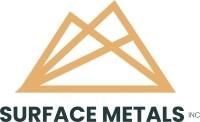
To view the source version of this press release, please visit https://www.newsfilecorp.com/release/276222

News Provided by Newsfile via QuoteMedia
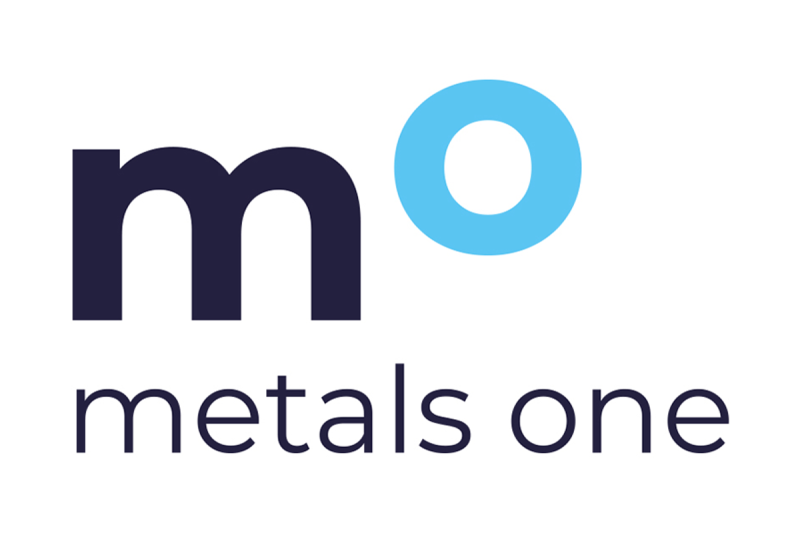
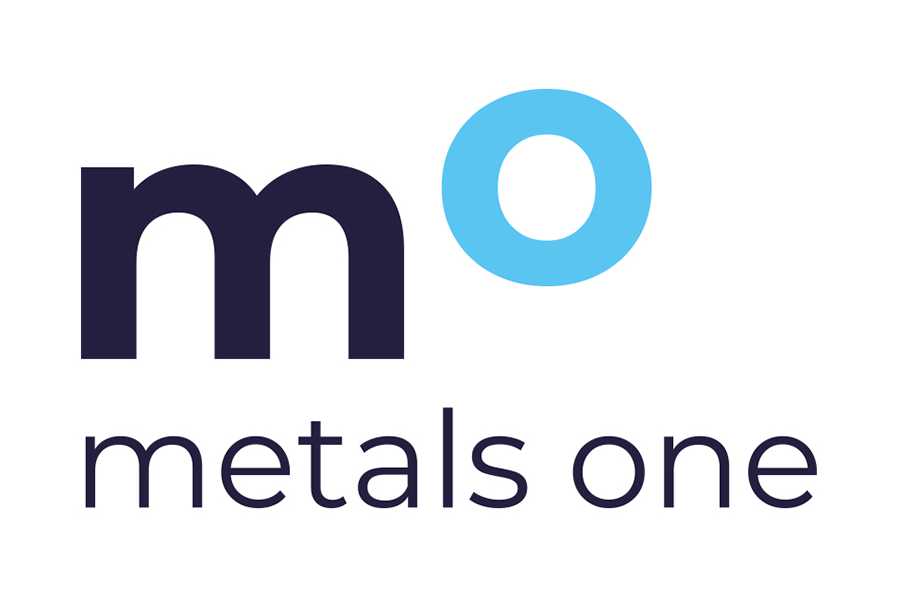
Metals One (AIM: MET1, OTCQB: MTOPF), a critical and precious metals exploration and development company, is pleased to announce it is making a strategic investment of up to US$1.8 million in Lions Bay Resources (‘LBR’) by way of convertible loan notes (‘CLN’).
LBR is a South African private company formed earlier this year to hold partnership assets. It is jointly owned by Lions Bay Capital Inc. (‘Lions Bay’) (TSX-V: LBI) (Metals One: 19.1%) and by the Salamander Mining management team (‘Salamander’) headed by Graham Briggs (Non-Executive Chairman), the former CEO of Harmony Gold, South Africa’s largest gold producer and Lloyd Birrell (CEO), the founder and former CEO of Theta Gold (ASX:TGM).
LBR has secured an option for US$1.36 million over a large cogeneration plant located in the Karbochem Industrial Park, Newcastle, South Africa (‘Plant’). Research and planning has commenced around modifying the Plant to produce power and steam whilst also roasting refractory gold concentrates, common to mines in the region. Metals One and LBR have recently conducted due diligence on the Plant and have agreed to apply part of the funds from the CLN to exercising the option.
The Plant currently has the below specifications and associated infrastructure:
The Plant was inspected and verified by Terravista Solutions P. Ltd in October 2025 and ascribed a replacement value of US$39.6 million. Subject to receipt of a competent persons report, to be funded from the proceeds of the CLN, it is expected that the Plant will require approximately US$4.5 million to restart production of steam and power.
A large chrome smelter operation adjacent to the Plant, requiring power and steam, has been engaged and discussions around a mutually beneficial offtake agreement are underway.
Pending confirmatory research and studies, LBR plans to reconfigure the Plant to include a gold concentrate roasting complex, an alternative solution to exporting gold-bearing concentrate from South Africa to Asian smelters. This process has the potential to create a further revenue stream for the Plant by toll processing material from regional mines, while sustaining production of steam and power. At the election of Metals One, part of the proceeds from the CLN will be applied to commissioning a further technical report on the reconfiguration of the Plant to include a gold roaster.
The region is host to numerous multi-million-ounce gold deposits and tailings resources, the mining of which generate concentrate, all within a 300km radius of the Plant. In addition to the larger mining complexes, there are several small deposits which are unable to satisfy the high capital requirements of standalone operations that would benefit from a large centralised roasting facility such as LBR’s.
The near-term strategy for LBR is to acquire regional gold mining and tailings assets as potential feedstock for the gold roaster. Metals One and LBR have been working together on identifying acquisition opportunities that suit the potential configuration of the Plant and gold roaster, some with substantial gold inventory and mining infrastructure.
|
|
|
Figure 1: Map of South African historical and operating gold mines in the region. Source: Council for Geoscience, South Africa 2015. |
CLN
Metals One has conditionally agreed to subscribe for up to US$1.8 million CLNs in LBR in tranches, subject to the satisfaction of certain conditions in respect of each tranche, as below.
It is expected that tranches 1 and 2 will be for US$175,000 and US$1.625 million respectively. Any further tranches are to be made available at Metals One’s discretion and Metals One is to have the ability to require LBR to draw down amounts.
In consideration for Metals One’s subscription, LBR has agreed to issue Metals One such number of new shares on the date of the convertible loan note instrument as is equal to 5% of the issued share capital of LBR on a fully diluted and enlarged basis (‘Introduction Shares’).
The CLNs are to be redeemable for cash on an event of default or at the option of Metals One on first anniversary of the grant of the respective CLNs (the ‘Maturity Date’).
Metals One is to have the option to convert the CLNs into the most favourable class of shares in the capital of LBR in certain circumstances, including (but not limited to) on LBR acquiring the plant and on the relevant Maturity Date.
Assuming that Metals One advances the full US$1.8 million to LBR, upon conversion of the CLNs, Metals One’s shareholding in LBR is to be at least 30% of the issued share capital of LBR on a fully diluted and enlarged basis. Until conversion or redemption, the CLN attracts a 10% coupon that compounds annually that is to be rolled up and become payable in cash on the relevant Maturity Date or convertible into LBR shares, at the election of Metals One.
The CLNs are to be secured, amongst other things, by first ranking security over the assets of LBR.
|
|
|
Figure 2: Aerial photograph of the Plant, taken on the Metals One site visit. |
Dan Maling, Managing Director of Metals One, commented:
‘South Africa is historically the world’s largest gold producer, and we believe it has the perfect ingredients of abundant resources, infrastructure and mining expertise to become a leader once again.
With the acquisition of the gold roaster and associated infrastructure, alongside the experienced mining team at Salamander, LBR has the foundations to be a significant, vertically integrated South African gold company.
Metals One remains well financed with over £9 million in cash and liquid investments. Our network and ready access to capital enables us to facilitate downstream acquisitions such as this. We look forward to providing further updates on the growth opportunities with Lions Bay Resources in the coming months.’
Enquiries:
|
Metals One Plc Daniel Maling, Managing Director Craig Moulton, Chairman |
info@metals-one.com +44 (0)20 7981 2576 |
|
Beaumont Cornish Limited (Nominated Adviser) James Biddle / Roland Cornish |
+44 (0)20 7628 3396 |
|
Capital Plus Partners Limited (Broker) Jonathan Critchley |
+44 (0)207 432 0501 |
|
Vigo Consulting (UK Investor Relations) Ben Simons / Fiona Hetherington / Anna Stacey |
IR.MetalsOne@vigoconsulting.com +44 (0)20 7390 0230 |
|
Fairfax Partners Inc (North America Investor Relations) |
connect@fairfaxpartners.ca +1 604 366 6277 |
About Metals One
Metals One is pursuing a strategic portfolio of critical and precious metals projects and investments underpinned by the Western World’s urgent need for reliably and responsibly sourced raw materials – and record high gold prices. Metals One’s shares are listed on the London Stock Exchange’s AIM Market (MET1) and on the OTCQB Venture Market in the United States (MTOPF).
Map of Metals One projects/investments
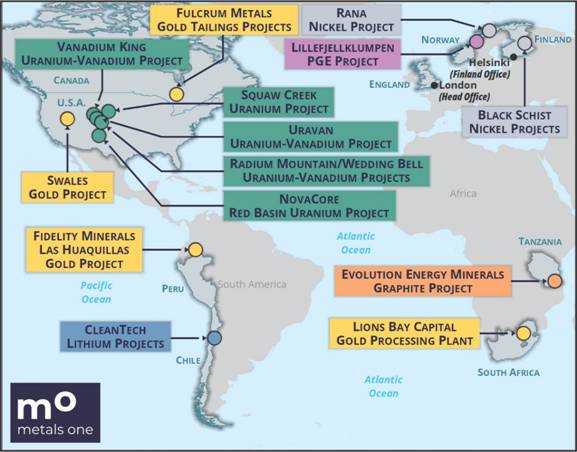
Follow us on social media:
LinkedIn: https://www.linkedin.com/company/metals-one-plc/
X: https://x.com/metals_one_PLC
Subscribe to our news alert service on the Investors page of our website at: https://metals-one.com
Market Abuse Regulation (MAR) Disclosure
The information set out below is provided in accordance with the requirements of Article 19(3) of the Market Abuse Regulations (EU) No. 596/2014 which forms part of UK domestic law by virtue of the European Union (Withdrawal) Act 2018 (‘MAR’).
Nominated Adviser
Beaumont Cornish Limited (‘Beaumont Cornish’) is the Company’s Nominated Adviser and is authorised and regulated by the FCA. Beaumont Cornish’s responsibilities as the Company’s Nominated Adviser, including a responsibility to advise and guide the Company on its responsibilities under the AIM Rules for Companies and AIM Rules for Nominated Advisers, are owed solely to the London Stock Exchange. Beaumont Cornish is not acting for and will not be responsible to any other persons for providing protections afforded to customers of Beaumont Cornish nor for advising them in relation to the proposed arrangements described in this announcement or any matter referred to in it.
Source
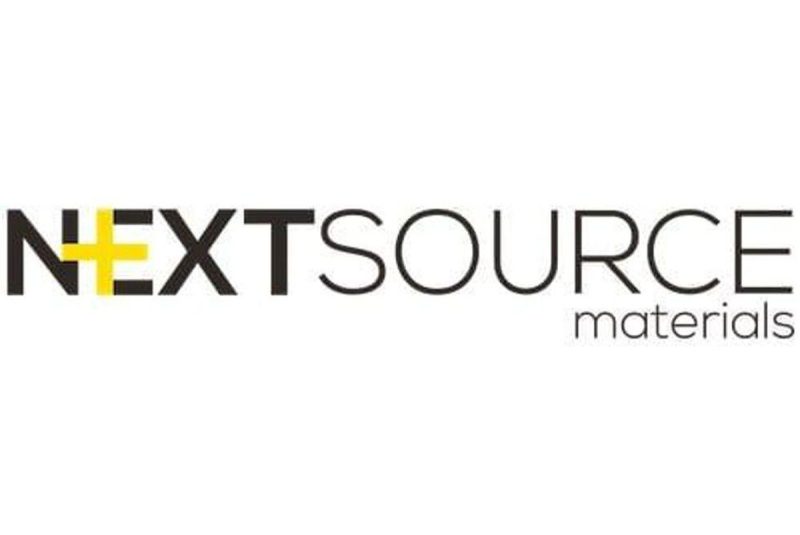
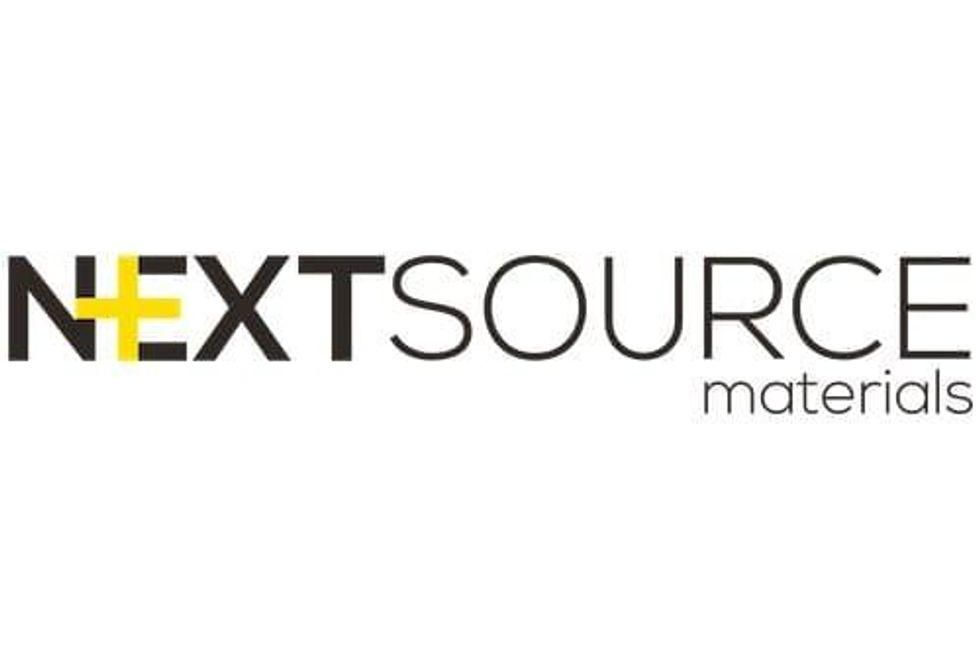
TORONTO, ON / ACCESS Newswire / November 27, 2025 / NextSource Materials Inc. (TSX:NEXT,OTC:NSRCF)(OTCQB:NSRCF) (‘NextSource’ or the ‘Company’) announces that its senior executive team successfully hosted a comprehensive site visit on November 25, 2025 to the property and industrial building secured for its first commercial-scale Battery Anode Facility (‘BAF’) in the Industrial City of Abu Dhabi (‘ICAD’) in the United Arab Emirates (‘UAE’).
 |
 |
|
Proposed Renovation of the Building of the UAE BAF |
Actual Building Secured for the UAE BAF |
The site visit brought together a select delegation of global and regional investors, sovereign-linked stakeholders, and global financial institutions currently evaluating participation in the Company’s strategic funding process. Attendees met with senior management, toured the secured industrial building, reviewed the proposed phased development plan, and discussed timelines for installation, commissioning, and initial production of active anode material for lithium-ion batteries used in electric vehicles.
Hanré Rossouw, President and CEO, commented:
‘We were delighted to welcome potential funding partners to our Abu Dhabi property to witness the scale and readiness of our secured facility. The engagement and interest we continue to receive from both local and global investors underscores the strategic significance of establishing a major anode facility in the UAE. The secured building in ICAD provides a high-quality, installation-ready platform for accelerated deployment of our anode manufacturing equipment strategically located close to deep-water ports that service international shipping routes’.
The UAE BAF is a central pillar of NextSource’s vertical integration strategy and would position NextSource to become the largest anode producer outside of Asia and is part of its global expansion strategy to construct BAFs in key geographic locations, each with modular production capacities, that can be expanded in lockstep with automotive manufacturer (‘OEM’) demand. The ICAD location provides the ideal platform to execute the Company’s downstream strategy at speed and scale. The combination of an expedited permitting environment, world-class infrastructure, and proximity to domestic raw-material sources and customer end markets provides a competitive advantage over other jurisdictions.
The UAE BAF is being developed primarily to fulfil NextSource’s binding multi-year offtake agreement with Mitsubishi Chemical Corporation (‘MCC’), Japan’s largest chemical company and a leading global supplier of anode active material (‘AAM’) to automotive OEMs.
Under the agreement announced on August 5, 2025, NextSource is the sole supplier of approximately 9,000 tpa of intermediate AAM produced from its Molo graphite concentrate. This material will be shipped to MCC’s plant in Japan, where MCC will complete final processing and coating before delivering finished AAM to a major OEM’s electric-vehicle battery cell manufacturing facilities in North America.
The 30,000 tpa UAE facility, as validated by an October 1, 2025 technical and economic study, provides immediate capacity for the MCC volumes from start-up and significant headroom for additional offtake agreements currently under negotiation.
The Company continues to advance front-end engineering and design with its partner firm Stantec, a global engineering service provider who worked in conjunction with NextSource’s technology partners to develop a UAE-compliant plant design, using proven process technology that will reduce qualification times once the UAE BAF becomes operational. The Company has also begun procurement of long lead item equipment and discussions on final-stage financing with several parties from the site-visit delegation.
Shipment of BAF processing equipment has commenced, and after obtaining the required funding and operating permits, the Company will procure the remaining plant equipment, after which the Project will move into the installation phase and finally into commissioning, which is targeted towards the end of 2026.Initial production is targeted for Q4 2026 and full ramp-up thereafter.
About NextSource Materials Inc.
NextSource Materials Inc. is a battery materials company based in Toronto, Canada that is intent on becoming a vertically integrated global supplier of battery materials through the mining and value-added processing of graphite and other minerals.
The Company’s Molo graphite project in Madagascar is one of the largest known and highest-quality graphite resources globally, and the only one with SuperFlake® graphite. The Molo mine has begun production through Phase 1 mine operations.
The Company is also developing a significant downstream graphite value-add business through the staged rollout of Battery Anode Facilities (BAF) capable of large-scale production of coated, spheronized and purified graphite for direct delivery to battery and automotive customers, in a fully transparent and traceable manner. The Company is now in the process of developing its first BAF in the UAE.
NextSource Materials is listed on the Toronto Stock Exchange under the symbol ‘NEXT’ and on the OTCQB under the symbol ‘NSRCF’.
For further information about NextSource Materials, please visit our website at www.nextsourcematerials.com or contact us at +1.416.364.4911 or email Brent Nykoliation, Executive Vice President at brent@nextsourcematerials.com.
Safe Harbour: This press release contains statements that may constitute ‘forward-looking information’ or ‘forward-looking statements’ within the meaning of applicable Canadian and United States securities legislation. Readers are cautioned not to place undue reliance on forward-looking information or statements. Forward looking statements and information are frequently characterized by words such as ‘plan’, ‘expect’, ‘project’, ‘intend’, ‘believe’, ‘anticipate’, ‘estimate’, ‘potential’, ‘possible’ and other similar words, or statements that certain events or conditions ‘may’, ‘will’, ‘could’, ‘expected’ or ‘should’ occur. Forward-looking statements include any statements regarding, among others, timing of construction and completion of the BAF and proposed timing of future locations of additional BAFs, timing and completion of front-end engineering and design and ESIA permitting, the economic results of the BAF Technical Study including capital costs estimates, operating costs estimates, payback, NPV, IRR, production, sales pricing and working capital estimates, the construction and potential expansion of the BAFs, expansion plans, as well as the Company’s intent on becoming a fully integrated global supplier of critical battery and technology materials. These statements are based on current expectations, estimates and assumptions that involve a number of risks, which could cause actual results to vary and, in some instances, to differ materially from those anticipated by the Company and described in the forward-looking statements contained in this press release. No assurance can be given that any of the events anticipated by the forward-looking statements will transpire or occur or, if any of them do so, what benefits the Company will derive there from. The forward-looking statements contained in this news release are made as at the date of this news release and the Company does not undertake any obligation to update publicly or to revise any of the forward-looking statements, whether because of new information, future events or otherwise, except as may be required by applicable securities laws. Although the forward-looking statements contained in this news release are based on what management believes are reasonable assumptions, the Company cannot assure investors that actual results will be consistent with them. These forward-looking statements are made as of the date of this news release and are expressly qualified in their entirety by this cautionary statement. Subject to applicable securities laws, the Company does not assume any obligation to update or revise the forward-looking statements contained herein to reflect events or circumstances occurring after the date of this news release.
SOURCE: NextSource Materials Inc.
View the original press release on ACCESS Newswire
![]()
News Provided by ACCESS Newswire via QuoteMedia
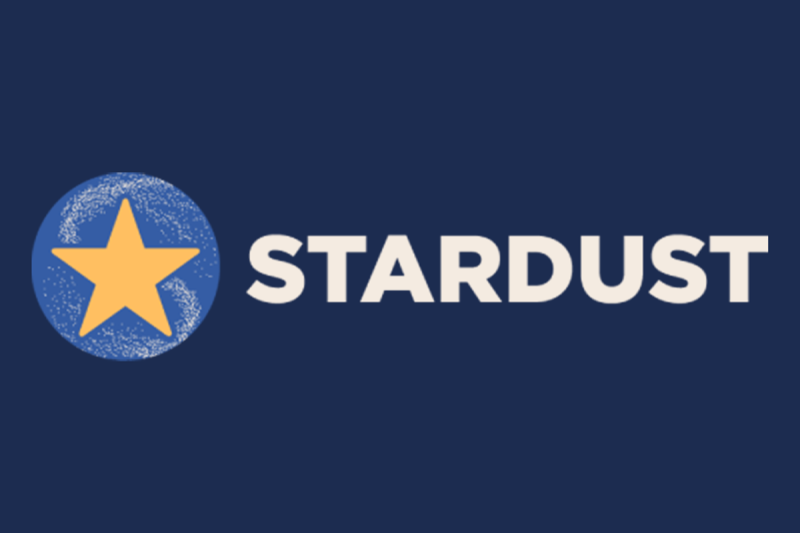
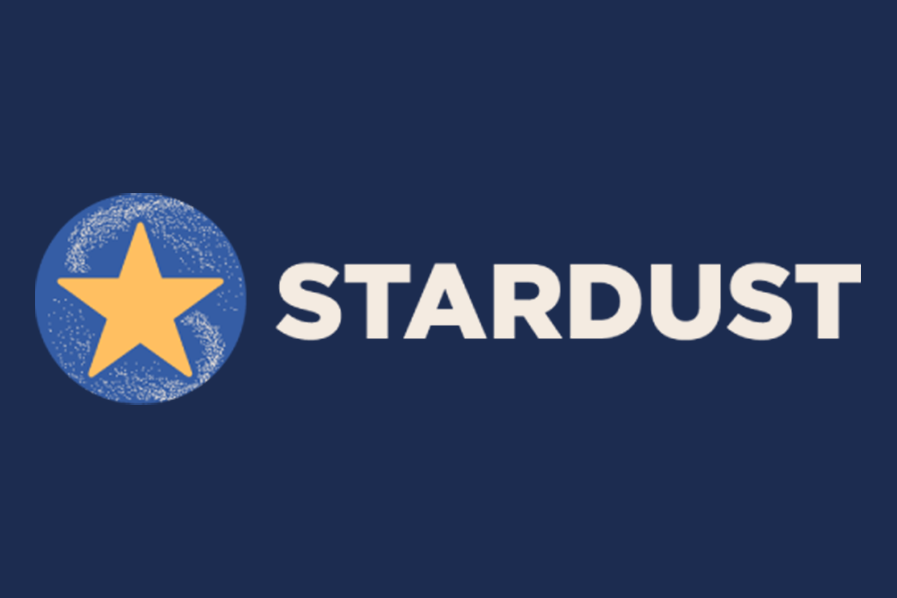
Stardust Metal Corp. (CSE: ZIGY) (‘Stardust’ or the ‘Company’) is pleased to announce the discovery of a significant geophysical target at its McGarry Project, located in the heart of the world-class Kirkland Lake gold district, home to some of Canada’s most prolific high-grade gold mines, including Kerr Addison, Macassa, Upper Beaver, and several others.
Presentation on McGarry’s Ultramafic Target
MT Image of Target
Map of McGarry’s Location in Kirkland Lake
Geophysical Target Highlights
The Magnetotellurics (MT) survey highlights a large, deep feature beneath the sedimentary cover, visible from approximately -250 m and extending well beyond -1,000 m, below the depth detectable by conventional IP methods.
IP Survey
An Induced Polarization (IP) survey was done concurrently with the MT survey and confirms the general pattern of the MT results in the top 250 of the sections both in terms of the resistivity and the chargeability responses and major features such as the Larder Lake-Cadillac Deformation Zone (LLCDZ), the Armistice Fault and the Mill Zone Fault are visible on both surveys but the anomaly that is highlighted in this news release is located below the IP response.
The anomaly is interpreted as a folded ultramafic unit, in disconformable contact with overlying sediments and forms a synclinal structure plunging to the west. The base of the sedimentary unit has not been intersected in drilling and until recently was thought to be very deep and beyond the limit of geophysics. But the MT response is very clear and indicates the presence of a low-resistivity body sitting right beneath the sediments and espousing the syncline from about 250m depth to well beyond 1000m. Its shape and response suggests potential to host an ultramafic unit similar to the rocks that host the known gold deposits in the district. Only drilling this target will tell if gold-rich solutions penetrated the body but an Ambient Noise Tomographic (ANT) seismic survey should refine the target in anticipation of drill testing.
Key structures including the LLCDZ, Armistice Fault, and Mill Zone Fault are clearly reflected in both IP and MT datasets, demonstrating the reliability of the survey and aligning with known district-scale controls on mineralization.
The McGarry Project sits immediately adjacent to several historic and currently operating high-grade mines. The identification of a deep, never-drilled target within potentially ultramafic rocks underscores the potential to discover new, high-grade zones at depth, complementing the district’s rich endowment of gold resources.
This target, which has never been drilled and was highlighted during recent compilation work, was identified thanks to a comprehensive IP-MT survey completed by Quantec and reviewed and interpreted by Charles Beaudry, M.Sc., P.Geo. The anomaly sits beneath a sedimentary unit usually mapped as Temiskaming Assemblage and, by its shape and low resistivity, is thought to represent an ultramafic unit. The anomaly’s size, depth, and geological context make it a high-priority drill target, with potential to host significant mineralization similar to nearby high-grade deposits.
‘If it is an ultramafic unit as postulated, it has never been tested in drilling or seen in underground workings and it is possible that the fluids responsible for the Kerr Addison deposit (see Gold Candle news release dated June 3rd 2025) could have penetrated the domain lying beneath the sedimentary unit. This prediction is totally reasonable because of the presence of significant near surface gold mineralization (see Mill Zone on Kerr Addison and McGarry properties) as much as 1,000 metres south of the Larder Lake-Cadillac Deformation Zone (LLCDZ),’ said Charles Beaudry, Director of Stardust.
Next Steps
Stardust plans to conduct an Ambient Noise Tomography (ANT) survey to provide high-resolution 3D imaging of density-velocity contrasts. This approach will refine the depth, size, and geometry of the anomaly and guide the first-ever drill testing of this exciting ultramafic target.
QP Statement
The technical information contained in this news release has been reviewed and approved by Charles Beaudry, P.Geo and géo., Director of Stardust Metal Corp., a Qualified Person, as defined in ‘National Instrument 43-101, Standards of Disclosure for Mineral Projects.’ For the exploration undertaken by Stardust, all assay batches are accompanied by rigorous Quality Assurance procedures, including the insertion of standards and blanks.
For the latest videos from Stardust, Ore Group, and all things mining, subscribe to our YouTube Channel here.
To Speak to the Company directly, please contact:
Stephen Stewart, Chairman
Phone: 416.644.1567
Email: info@oregroup.ca
www.stardustmetal.com
Neither the Canadian Securities Exchange nor its Regulation Services Provider accept responsibility for the adequacy or accuracy of this release. Certain information in this press release may contain forward-looking statements. This information is based on current expectations that are subject to significant risks and uncertainties that are difficult to predict. Actual results might differ materially from results suggested in any forward-looking statements. Stardust assumes no obligation to update the forward-looking statements, or to update the reasons why actual results could differ from those reflected in the forward-looking statements unless and until required by securities laws applicable to Stardust. Additional information identifying risks and uncertainties is contained in filings by Stardust with Canadian securities regulators, which filings are available under Stardust profile at www.sedarplus.ca.
Source
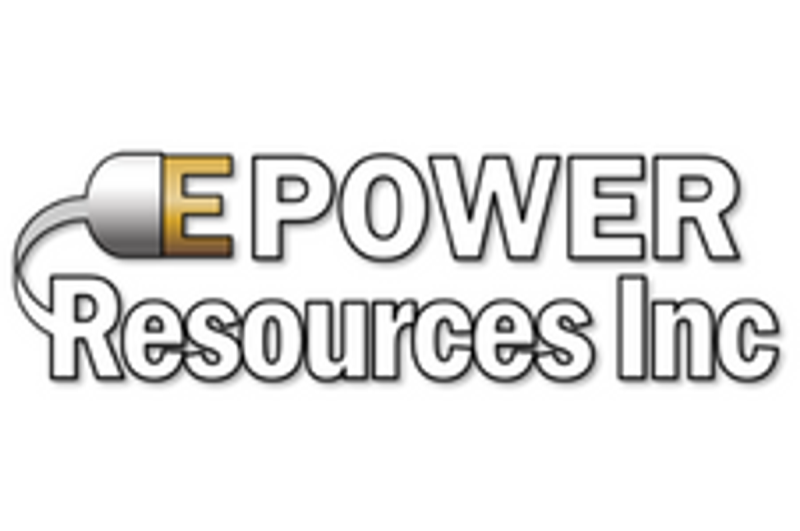
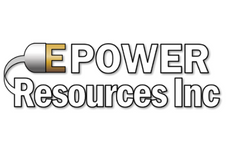
E-Power Resources Inc. (CSE: EPR) (‘E-Power’ or the ‘Company’) today announces significant appointments to its executive leadership and advisory teams. These changes are designed to implement a robust, focused, and value-driven development plan for the Tetepisca Graphite Project in Québec, capitalizing on the project’s technical potential.
The Company appoints Jean-Michel Gauthier as Chief Executive Officer and Mark Billings, CFA, as Chairman of the Board. This core leadership is now strategically expanded with the addition of Christian Falk to the Advisory Board, ensuring access to essential technical, financial, and commercial expertise moving forward.
New Leadership and Corporate Strategy
Jean-Michel Gauthier Appointed CEO
E-Power Resources appoints Jean-Michel Gauthier as Chief Executive Officer. Mr. Gauthier contributes significant expertise in capital markets, corporate development, and strategic positioning within the resource sector. His focus will be on ensuring the optimal deployment of capital and maximizing the inherent value of the Tetepisca Project as it advances through key de-risking stages.
CEO’s Statement: ‘The validated metallurgical results provide a clear, actionable mandate and reinforce our strong conviction in Tetepisca. We are moving forward decisively with an agile, focused operating strategy across the entire organization, prioritizing strict cost discipline and aggressive technical execution. Our expanded team’s commitment is simple: prove up the project to its full potential by completing resource definition, establishing robust economic parameters, and securing key strategic partnerships vital for the next stages of development.’
Mark Billings Appointed Chairman of the Board
Mark Billings, CFA, is appointed Chairman. Mr. Billings is a highly respected finance professional in the Canadian resource sector, bringing extensive investment banking and corporate finance experience. His prior roles, including VP Corporate Finance at Desjardins Securities, provide a crucial foundation for guiding E-Power’s capital formation and strategic financing plans necessary for the Tetepisca Project’s development phases.
Advisory Board Addition
The strategic strengthening of the Advisory Board ensures the Company has access to high-level technical and commercial insight vital for future development:
Christian Falk Joins the Advisory Board: Mr. Falk is Co-founder of Camet AG, Zug Switzerland and Vega Metals Trading Inc, Montreal, Canada. He provides over 16 years of global mining and metals trading experience, including significant tenure with Glencore International AG. His expertise in global graphite and critical metals markets will be critical in formulating E-Power’s downstream commercial strategy and understanding customer specifications.
Momentum Driven by Strong Metallurgical Results
The leadership team’s focused mandate is strongly supported by the Company’s recent robust metallurgical results (November 20, 2025), which validate the project’s technical potential for producing high-quality flake graphite concentrate:
| Key Metallurgical Metrics (Graphi West Sample) |
Result | Significance |
| Flotation Recovery | 96.7% | Excellent material recovery efficiency. |
| Concentrate Grade | 94.8% Ct | Meets general commercial purity specifications with potential for further upgrading. |
| Large/Medium Flake | ~40% | Flake sizes larger than medium, which typically command premium pricing. |
| High Grade Samples | 15.3% to 32.7% Cg | Demonstrates high-grade zones across multiple mineralized areas. |
These strong results confirm Tetepisca’s potential to deliver a high-value, high-purity natural flake graphite product essential for batteries and other advanced industrial applications. The mandate for the expanded team is to swiftly leverage these validated findings into a detailed resource definition and preliminary economic assessment.
About E-Power Resources
E-Power Resources Inc. is a Québec corporation based in Montréal focused on the exploration and development of critical minerals in Québec. The Company is focused on flake graphite resource development at the Tetepisca Property located in the Innu Nation of Pessamit within Québec’s emerging Tetepisca Graphite District, a region known for high-quality graphite mineralization.
For Further Information
Jean-Michel Gauthier
Chief Executive Officer
E-Power Resources Inc.
info@epowerresources.com

To view the source version of this press release, please visit https://www.newsfilecorp.com/release/276129

News Provided by Newsfile via QuoteMedia
![]()
The United Kingdom is looking at building bilateral critical minerals partnerships with various countries, including Australia.
On Tuesday (November 25), UK Industry Minister Chris McDonald was said to have mentioned a collaboration with Australia under the AUKUS defence pact, according to a news report by Reuters.
McDonald added that critical minerals were ‘very much’ part of that relationship because of their role in defence supply chains.
“This new, targeted Critical Minerals Strategy sets the UK’s long-term ambition for securing critical minerals and harnessing our competitive advantage in recycling and innovative midstream processing—the transformation of mined or recycled materials into refined or upgraded forms suitable for manufacturing,” the new Critical Minerals Strategy read, published on November 22.
Called Vision 2035, the strategy aims that no single country provides more than 60 percent of the UK’s supply of any one critical mineral.
It also targets that the UK meets 10 percent of its critical mineral needs from its own mines and 20 percent from recycling.
Key policy objectives of the strategy include optimising domestic production and building resilient UK and global supply networks.
‘Part of the strategy is our (Ministry of Defence) procurement plan as well, which includes stockpiling of critical minerals,’ McDonald told Reuters.
The UK laid out in its new Critical Minerals Strategy that measures could include stockpiling, including through procurement mechanisms, to align with the Ministry of Defence’s commitments to build resilience in critical mineral supplies for UK defence.
Under UK’s Defence Industrial Strategy 2025 sector plan, priority outcomes include, but are not limited to, making defence an engine for growth, backing US-based businesses and developing a resilient UK industrial base.
This is also where the partnership with Australia under the AUKUS defence pact lines up.
Besides the AUKUS defence pact, Australia has become a significant topic in bilateral partnerships among nations following its rare earths deal with the US.
The US$8.5 billion deal, signed in mid-October, includes a US$1 billion investment from both the US and Australia over the next six months for initial projects.
Among the projects aiming to take advantage of the recent Australia–US deal is the Yangibana rare earths project owned by Wyloo Metals and Hastings Technology Metals Limited (ASX:HAS,OTC:HSRMF).
Following the US, Australia also signed a joint declaration of intent on critical minerals with Canada in early November.
The new agreement builds on the Australia-US rare earths deal and is between Australia’s Department of Industry, Science and Resources and the Department of Natural Resources of Canada.
It covers the establishment of a ministerial for critical minerals, project financing, policy alignment and regulation and information sharing.
In 2023, Australia also signed a statement of intent with the UK to strengthen cooperation on critical minerals.
“(The statement) further strengthens Australia’s resolve to develop our critical minerals sector to be a global supplier of the resources needed for clean-energy technology, such as batteries, electric vehicles, solar panels and wind turbines,” Minister for Resources and Northern Australia, Madeleine King said.
“We will work closely with the UK to build resilient, sustainable, and transparent supply chains for critical minerals, which help both the UK and Australia to lower emissions and achieve net zero commitments.”
King also travelled to the UK in the same year, calling it a “chance to outline” how Australia is partnering with industry and other countries to broaden global supply chains and boost investment in mining and processing key critical minerals.
Rare earths have been heavily spotlighted in October in Australia following China’s expansion of control over rare earth exports, a sector crucial to global tech and defense industries.
The October 10 announcement from the Ministry of Commerce adds five new elements —holmium, erbium, thulium, europium and ytterbium—along with key refining technologies to its export control list.
The new rules carry a global reach: any foreign company producing rare earth materials or magnets using Chinese-origin equipment or technology must now obtain an export license from Beijing.
Securities Disclosure: I, Gabrielle de la Cruz, hold no direct investment interest in any company mentioned in this article.
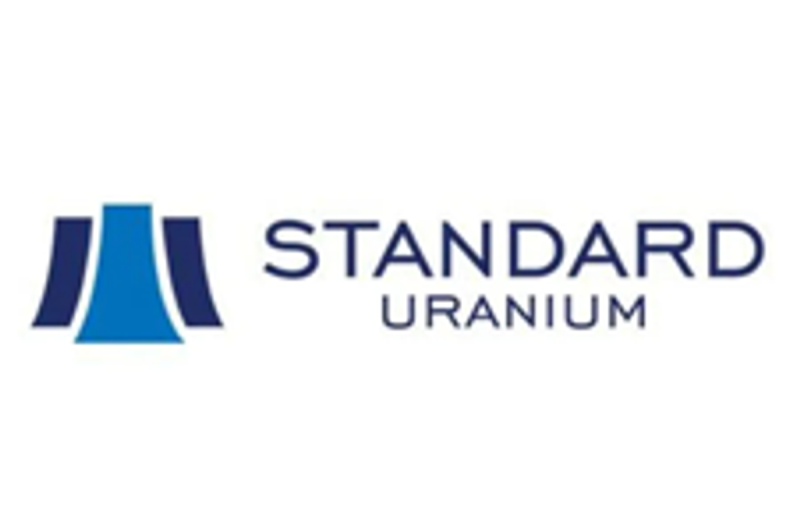

Standard Uranium Ltd. (TSXV: STND,OTC:STTDF) (OTCQB: STTDF) (FSE: 9SU0) (‘Standard Uranium’ or the ‘Company’) is pleased to announce exploration permits have been received for the Corvo Uranium Project (‘Corvo’, or the ‘Project’), currently under a three-year earn-in option agreement with Aventis Energy Inc. (CSE: AVE) (‘Aventis’). Work programs under the 18-month permit will include high-resolution geophysical surveys and the Company’s first drill program on the Project beginning in January 2026.
The Company contracted MWH Geo-Surveys (Canada) Ltd. (‘MWH‘) to complete an extensive 50 m x 200 m ground gravity survey covering more than 29 km of conductive strike length, which will aid in identifying density anomalies that may represent hydrothermal alteration systems coinciding with uranium fertile electromagnetic (‘EM‘) conductor trends. MWH mobilized to the Project on November 24, 2025, and the survey will comprise more than 5,000 individual gravity measurement stations.
Following completion of the gravity survey, a skid-assisted diamond drill program totalling approximately 3,000 metres is planned for winter 2026, which will mark the first drill program on the Project in more than 40 years. Drilling will target high-priority areas including the never-before-drilled Manhattan Showing and other newly-identified radioactive occurrences across the property. Outcrop grab samples collected earlier this year returned uranium assays reaching a maximum of 8.10% U3O8 at the Manhattan Showing1.
‘The gravity survey now underway will further refine our target areas for drilling in Q1 2026,’ said Sean Hillacre, President & VP Exploration of Standard Uranium. ‘Layering the new density results with the EM data from the Xcite TDEM survey we completed earlier this year, in addition to the surficial geological information gathered during our prospecting program will provide multiple high-priority drill targets for our maiden drill campaign this winter.’
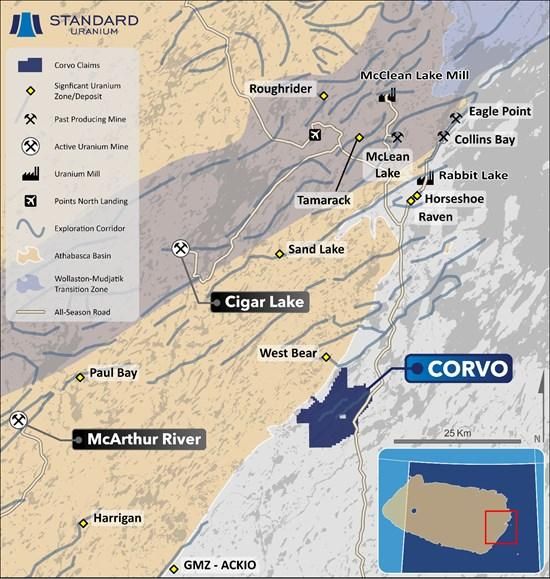
Figure 1. Regional map of the Corvo Project. The Project is located 60 km due east of Cameco’s McArthur River mine and 45 km northeast of Atha Energy’s Gemini Mineralized Zone (‘GMZ’).
To view an enhanced version of this graphic, please visit:
https://images.newsfilecorp.com/files/10633/276125_a04b05a71436f953_001full.jpg
2025 Exploration Programs
Earlier this year, the Company contracted Axiom Exploration Group Ltd. in partnership with New Resolution Geophysics to carry out a helicopter-borne Xcite time domain electromagnetic and total field magnetic survey over the Corvo Project. The survey totalled approximately 1,380 line-kms with a traverse line spacing of 100 m and tie-line spacing of 1,000 m. The airborne TDEM survey outlines several kilometers of conductive anomalies and magnetic features in bedrock, effectively enhancing the resolution of more than 29 kilometres of conductive trends on the project.
Ongoing geophysical interpretation and modeling is being completed to integrate historical surveys with newly collected datasets, which will provide high-priority drill targets and significantly derisk the Project prior to modern drilling in 2026.
In July of 2025, Standard Uranium completed the Company’s first prospecting and mapping program on the project with the objective of ground-truth sampling historical uranium showings including the Manhattan Showing, which returned results up to 59,800 ppm uranium (total digestion)2. The Company identified zones of off-scale** radioactivity (>65,535 cps on a handheld RS-125 Super-Spec) and collected hand samples which returned results ranging from 0.72% to 8.10% U₃O₈1, the highest grades ever reported on the project. New drill targets were developed based on previously undocumented radioactive showings, and an NI 43-101 technical report was filed on the project, highlighting high-grade surface mineralization at the Manhattan Showing3.
The Company believes the Project is highly prospective for the discovery of shallow, high-grade* basement-hosted uranium mineralization akin to the Rabbit Lake deposit and the recently discovered Gemini Mineralized Zone. Located just outside the current margin of the Athabasca Basin, Corvo boasts shallow drill targets with bedrock under minimal cover of glacial till.
Qualified Person Statement
The scientific and technical information contained in this news release has been reviewed, verified, and approved by Sean Hillacre, P.Geo., President and VP Exploration of the Company and a ‘qualified person’ as defined in NI 43-101 – Standards of Disclosure for Mineral Projects.
Samples collected for analysis were sent to SRC Geoanalytical Laboratories in Saskatoon, Saskatchewan for preparation, processing, and ICP-MS or ICP-OES multi-element analysis using total and partial digestion and boron by fusion. Radioactive samples were tested using the ICP1 uranium multi-element exploration package plus boron. All samples marked as radioactive upon arrival to the lab were also analyzed using the U3O8 assay (reported in wt.%). SRC is an ISO/IEC 17025:2005 and Standards Council of Canada certified analytical laboratory. Blanks, standard reference materials, and repeats were inserted into the sample stream at regular intervals in accordance with Standard Uranium’s quality assurance/quality control (QA/QC) protocols. All samples passed internal QA/QC protocols and the results presented in this release are deemed complete, reliable, and repeatable.
Historical data disclosed in this news release relating to sampling results from previous operators are historical in nature. Neither the Company nor a qualified person has yet verified this data and therefore investors should not place undue reliance on such data. The Company’s future exploration work may include verification of the data. The Company considers historical results to be relevant as an exploration guide and to assess the mineralization as well as economic potential of exploration projects. Any historical grab samples disclosed are selected samples and may not represent true underlying mineralization.
Natural gamma radiation from rocks reported in this news release was measured in counts per second (‘cps’) using a handheld RS-125 super-spectrometer and RS-120 super-scintillometer. Readers are cautioned that scintillometer readings are not uniformly or directly related to uranium grades of the rock sample measured and should be treated only as a preliminary indication of the presence of radioactive minerals. The RS-125 and RS-120 units supplied by Radiation Solutions Inc. (‘RSI’) have been calibrated on specially designed Test Pads by RSI. Standard Uranium maintains an internal QA/QC procedure for calibration and calculation of drift in radioactivity readings through three test pads containing known concentrations of radioactive minerals. Internal test pad radioactivity readings are known and regularly compared to readings measured by the handheld scintillometers for QA/QC purposes.
References
1 News Release: Standard Uranium Confirms High-Grade Uranium Mineralization up to 8.10% U3O8 at Surface on the Corvo Project, https://standarduranium.ca/news-releases/standard-uranium-confirms-high-grade-uranium-mineralization-at-surface-on-the-corvo-project/
2 SMDI# 2052: https://mineraldeposits.saskatchewan.ca/Home/Viewdetails/2052 & Mineral Assessment Report MAW00047: Eagle Plains Resources Inc., 2011-2012
3 News Release: Standard Uranium Announces Filing of NI 43-101 Technical Report on the Corvo Uranium Project, Northern Saskatchewan, https://standarduranium.ca/news-releases/standard-uranium-announces-filing-of-ni-43-101-technical-report-on-the-corvo-uranium-project-northern-saskatchewan/
*The Company considers uranium mineralization with concentrations greater than 1.0 wt% U3O8 to be ‘high-grade’.
**The Company considers radioactivity readings greater than 65,535 counts per second (cps) on a handheld RS-125 Super-Spectrometer to be ‘off-scale’.
***The Company considers radioactivity readings greater than 300 counts per second (cps) on a handheld RS-125 Super-Spectrometer to be ‘anomalous’.
About Standard Uranium (TSXV: STND,OTC:STTDF)
We find the fuel to power a clean energy future
Standard Uranium is a uranium exploration company and emerging project generator poised for discovery in the world’s richest uranium district. The Company holds interest in over 235,435 acres (95,277 hectares) in the world-class Athabasca Basin in Saskatchewan, Canada. Since its establishment, Standard Uranium has focused on the identification, acquisition, and exploration of Athabasca-style uranium targets with a view to discovery and future development.
Standard Uranium’s Davidson River Project, in the southwest part of the Athabasca Basin, Saskatchewan, comprises ten mineral claims over 30,737 hectares. Davidson River is highly prospective for basement-hosted uranium deposits due to its location along trend from recent high-grade uranium discoveries. However, owing to the large project size with multiple targets, it remains broadly under-tested by drilling. Recent intersections of wide, structurally deformed and strongly altered shear zones provide significant confidence in the exploration model and future success is expected.
Standard Uranium’s eastern Athabasca projects comprise over 43,185 hectares of prospective land holdings. The eastern basin projects are highly prospective for unconformity related and/or basement hosted uranium deposits based on historical uranium occurrences, recently identified geophysical anomalies, and location along trend from several high-grade uranium discoveries.
Standard Uranium’s Sun Dog project, in the northwest part of the Athabasca Basin, Saskatchewan, is comprised of nine mineral claims over 19,603 hectares. The Sun Dog project is highly prospective for basement and unconformity hosted uranium deposits yet remains largely untested by sufficient drilling despite its location proximal to uranium discoveries in the area.
For further information contact:
Jon Bey, Chief Executive Officer, and Chairman
Suite 3123, 595 Burrard Street
Vancouver, British Columbia, V7X 1J1
Tel: 1 (306) 850-6699
E-mail: info@standarduranium.ca
Cautionary Statement Regarding Forward-Looking Statements
This news release contains ‘forward-looking statements’ or ‘forward-looking information’ (collectively, ‘forward-looking statements’) within the meaning of applicable securities legislation. All statements, other than statements of historical fact, are forward-looking statements and are based on expectations, estimates and projections as of the date of this news release. Forward-looking statements include, but are not limited to, statements regarding: the timing and content of upcoming work programs; geological interpretations; timing of the Company’s exploration programs; and estimates of market conditions.
Forward-looking statements are subject to a variety of known and unknown risks, uncertainties and other factors that could cause actual events or results to differ from those expressed or implied by forward-looking statements contained herein. There can be no assurance that such statements will prove to be accurate, as actual results and future events could differ materially from those anticipated in such statements. Certain important factors that could cause actual results, performance or achievements to differ materially from those in the forward-looking statements are highlighted in the ‘Risks and Uncertainties’ in the Company’s management discussion and analysis for the fiscal year ended April 30, 2025.
Forward-looking statements are based upon a number of estimates and assumptions that, while considered reasonable by the Company at this time, are inherently subject to significant business, economic and competitive uncertainties and contingencies that may cause the Company’s actual financial results, performance, or achievements to be materially different from those expressed or implied herein. Some of the material factors or assumptions used to develop forward-looking statements include, without limitation: that the transaction with the Optionee will proceed as planned; the future price of uranium; anticipated costs and the Company’s ability to raise additional capital if and when necessary; volatility in the market price of the Company’s securities; future sales of the Company’s securities; the Company’s ability to carry on exploration and development activities; the success of exploration, development and operations activities; the timing and results of drilling programs; the discovery of mineral resources on the Company’s mineral properties; the costs of operating and exploration expenditures; the presence of laws and regulations that may impose restrictions on mining; employee relations; relationships with and claims by local communities and indigenous populations; availability of increasing costs associated with mining inputs and labour; the speculative nature of mineral exploration and development (including the risks of obtaining necessary licenses, permits and approvals from government authorities); uncertainties related to title to mineral properties; assessments by taxation authorities; fluctuations in general macroeconomic conditions.
The forward-looking statements contained in this news release are expressly qualified by this cautionary statement. Any forward-looking statements and the assumptions made with respect thereto are made as of the date of this news release and, accordingly, are subject to change after such date. The Company disclaims any obligation to update any forward-looking statements, whether as a result of new information, future events or otherwise, except as may be required by applicable securities laws. There can be no assurance that forward-looking statements will prove to be accurate, as actual results and future events could differ materially from those anticipated in such statements. Accordingly, readers should not place undue reliance on forward-looking statements.
Neither the TSX-V nor its Regulation Services Provider (as that term is defined in the policies of the TSX-V) accepts responsibility for the adequacy or accuracy of this release.

To view the source version of this press release, please visit https://www.newsfilecorp.com/release/276125

News Provided by Newsfile via QuoteMedia


Here’s a quick recap of the crypto landscape for Wednesday (November 26) as of 9:00 p.m. UTC.
Get the latest insights on Bitcoin, Ether and altcoins, along with a round-up of key cryptocurrency market news.
Bitcoin’s (BTC) price climbed from around US$87K to close at US$89,903.49 on Wednesday afternoon, a three percent increase in 24 hours.

Bitcoin price performance, November 26, 2025.
Chart via TradingView.
However, a 1.55 percent increase in open interest during the same four hour window suggests fresh buying interest, while a positive funding rate of 0.002 reflects modestly bullish market sentiment. A relative strength index of 62.56 for Bitcoin indicates that the asset is in moderately bullish territory but not yet overbought.
Despite optimism of a possible temporary reset, investors warn that a decisive break below US$80,000 could expose Bitcoin to a slide toward the US$69,000 to US$62,000 support range.
As analyst Ted Pillows wrote on X, “$BTC is facing a lot of resistance around the $88,000–$90,000 zone. If BTC doesn’t break above this level soon, expect a sweep of the lows again.”
“Notably, what makes this episode different from past crypto winters is the investor base. BTC is now held by ordinary investors in their mainstream portfolios. So many are treating it like any other high-beta risk asset,’ she said.
“This behavior means that current price action is more of a classic de-risking phase. Rate-cut expectations change quickly, so investors opt for assets they perceive as core ballast. Given that, the picture suggests a complementary reading rather than a simple “either/or.” Gold acts as the insurance that central banks are still actively adding. In turn, Bitcoin is the high-risk component that investors reduce first when volatility rises,’ added Chen.
Meanwhile, Ether (ETH) closed at US$3,025.84, a 3.1 percent increase in 24 hours. ETH also showed strong bullish momentum, with a 2.7 percent rise in open interest and liquidations predominantly on the short side, signaling a short squeeze; however, a positive funding rate of 0.008 underscores traders’ optimism.
Strategy (NASDAQ:MSTR) reiterated that its balance sheet can withstand a deep Bitcoin drawdown, telling investors in a recent X post that its collateral coverage would remain at 2.0x even if Bitcoin dropped to US$25,000.
The company disclosed updated calculations showing that its convertible debt remains overcollateralized despite the stock’s 49 percent slide and the risk of an MSCI index removal next year.
With 649,870 BTC — worth roughly US$57 billion — the firm remains the largest corporate holder of Bitcoin globally. Strategy maintains that this overcollateralization gives it room to manage volatility and refinance maturities that run through 2032. Despite the reassurances, the company continues to face pressure from index committees and investors reevaluating the long-term role of a Bitcoin-heavy corporate treasury.
Recently, S&P Dow Jones Indices left Strategy off its latest round of S&P 500 additions, choosing to elevate SanDisk instead despite Strategy’s market capitalization placing it within the top tier of US public companies.
Strategy’s bid for inclusion has been complicated by its reliance on Bitcoin holdings, which some index members argue behaves more like an investment vehicle than a traditional operating company.
For its part, Strategy insists that its software business, alongside its Bitcoin strategy, qualifies it as an operating firm under the index rules. Chairman Michael Saylor pushed back against the characterization, stressing on X that Strategy is “not a fund, not a trust, and not a holding company.”
Japan’s Financial Services Agency has finalized plans to move digital assets under the Financial Instruments and Exchange Act, marking the country’s most sweeping crypto regulatory overhaul in years.
The shift reclassifies crypto assets as investment products and subjects issuers and exchanges to disclosure and conduct standards similar to those governing securities.
The changes affect over 13 million Japanese crypto accounts that collectively hold more than ¥5 trillion, prompting concerns from local exchanges about higher compliance burdens.
The FSA’s working group outlined new obligations, including clearer disclosure of token supply, governance structures, project risk assessments, and issuer responsibilities.
In addition, exchanges will also be required to maintain reserve funds to cover potential hacking incidents. Regulators plan to crack down on unregistered offshore platforms that continue marketing to Japanese users without approval.
The legislative package is expected to be submitted during the 2026 Diet session.
In a historic move, the government of Bolivia is preparing to integrate cryptocurrencies and stablecoins, according to an announcement from the country’s economic minister, Jose Gabriel Espinoza.
“You can’t control crypto globally, so you have to recognize it and use it to your advantage,” Espinoza reportedly said, according to Reuters. With stablecoins like USDT already being used for cross-border payments and as a hedge against the local currency’s depreciation, banks will soon be allowed to custody crypto, as well as offer crypto-based savings accounts, credit cards, and loans.
A Spanish parliamentary bloc has introduced new tax amendments that would significantly increase the burden on Bitcoin, Ether, and other non-financial-instrument crypto assets.
The proposal would shift gains from crypto into the general personal income tax base, which carries rates of up to 47 percent — far above the current 30 percent maximum applied to savings-based income.
Lawmakers also want corporate crypto gains taxed at 30 percent and are pushing for a nationwide “traffic light” risk label that would appear on trading platforms.
Tax specialists argue the reforms would be difficult to implement, with some calling the package legally unworkable and likely to generate administrative chaos. Investors are likewise already expressing concern after a recent case in which a trader was taxed 9 million euros on a transaction that produced no profit, highlighting flaws in current enforcement.
If enacted, analysts further warn that the new measures could accelerate capital flight from Spain’s retail crypto market.
Grayscale submitted a Form S-3 registration statement to the US Securities and Exchange Commission on Wednesday, signaling the firm’s intention to convert its fund tied to Zcash into a spot exchange-traded fund.
Securities Disclosure: I, Giann Liguid, hold no direct investment interest in any company mentioned in this article.
Securities Disclosure: I, Meagen Seatter, hold no direct investment interest in any company mentioned in this article.


Here’s a quick recap of the crypto landscape for Monday (November 24) as of 9:00 p.m. UTC.
Get the latest insights on Bitcoin, Ether and altcoins, along with a round-up of key cryptocurrency market news.
Bitcoin (BTC) was priced at US$89,102.53, up 1.9 percent in 24 hours.
The cryptocurrency is up after last week’s rout, which saw over US$1.2 billion in spot Bitcoin exchange-traded fund (ETF) outflows, marking the third consecutive week with over US$1 billion in outflows, as per SoSoValue.

Bitcoin price performance, November 24, 2025.
Chart via TradingView.
However, market sentiment remains cautious, with the Fear and Greed Index reading 12 at market close. Increased open interest and large short liquidations suggest potential volatility and possible rebound dynamics.
“In the short term, a rebound is highly likely, but if we fall again and lose the US$80,000 level, the probability of facing a much tougher period becomes significantly higher,” CryptoQuant said in a post on X.
Bitcoin’s relative strength index at 58.52 indicates moderately bullish momentum, but is still comfortably below overbought territory. A -0.005 funding rate shows traders are still somewhat bearish, although short liquidations may start to shift momentum upward. Economic data due later this week could lift markets higher if it reinforces expectations of an interest rate cut from the US Federal Reserve. Market odds for a December rate cut have risen recently, with many sources placing the probability at around 70 to 79 percent.
Meanwhile, ETH (ETH) was US$2,973.36, up by 5.1 percent in 24 hours. Liquidations of US$39.75 million, predominantly in short positions, may have fueled upward price pressure through a short squeeze.
Open interest rose 3.07 percent to US$35.93 billion, suggesting increasing trader engagement and speculative activity in Ether derivatives. A funding rate of zero reflects a balance between bullish and bearish sentiment among traders.
Recent events in the crypto ecosystem have underscored the vulnerabilities and institutional challenges facing DeFi investors. On November 21, Cardano experienced an accidental chain split triggered by a malformed transaction, temporarily dividing the blockchain into two competing chains.
The disruption exposed weaknesses in network resilience and stake pool operations, causing lost block rewards and transaction irregularities in DeFi protocols dependent on Cardano’s network stability.
Then, Etherscan unexpectedly cut off API access to roughly 10 percent of its blockchains and networks. This sudden outage occurred during the DevConnect conference, impairing developers’ ability to manage smart contracts effectively, further revealing how dependent DeFi investors are on the reliability of ancillary infrastructure.
These events came amid growing tensions involving JPMorgan Chase (NYSE:JPM).
The banking giant has drawn ire from the crypto community for reportedly influencing MSCI to exclude digital asset treasury companies holding more than 50 percent of their assets in cryptocurrencies.
JPMorgan’s research warns that the exclusion could trigger forced selloffs potentially totaling up to US$8.8 billion, with Strategy (NASDAQ:MSTR) alone possibly facing US$2.8 billion in outflows.
The final decision will be announced on January 15 ,with changes taking effect in February.
The bank then upgraded ratings on Monday for Bitcoin-mining companies Cipher Mining (NASDAQ:CIFR) and CleanSpark (NASDAQ:CLSK) to overweight from neutral, citing strong momentum in high-performance computing partnerships and long-term cloud and colocation deals that improve revenue visibility.
JPMorgan’s stance highlights the institutional and regulatory tensions complicating the interface between traditional finance and the fast-evolving crypto ecosystem.
The Franklin XRP ETF (ARCA:XRPZ) and the Grayscale XRP Trust ETF (ARCA:GXRP) both launched on Monday, providing new regulated investment options for XRP exposure.
Investor response was prompt, with early trading volumes indicating strong demand and positive sentiment around XRP’s future prospects as reflected in the market’s reception to both ETFs.
Market watchers see this dual launch as a major step toward integrating crypto assets like XRP into traditional finance frameworks, enhancing liquidity and investor confidence.
Ray Youssef, CEO of peer-to-peer crypto app NoOnes, said a wave of altcoin ETF launches could bring a much-needed dose of optimism back into the market if investors interpret new listings as implicit regulatory approval.
“As market sentiment has been so underwhelming in recent times, the ETF season hitting the market at its current condition may be when they can make the most significant contribution to the digital asset economy this year.”
Youssef added that the launch of altcoin ETFs is creating a steady flow of capital into the digital asset market, providing a liquidity buffer. This momentum could lead to an end-of-year rally for altcoins.
Michael Burry, best known for his prescient bet against the US housing market in 2008, has launched a paid Substack newsletter not long after closing his hedge fund, Scion Asset Management.
In his introductory post, Burry emphasizes that the move does not mark a retirement, but rather a shift toward writing without the regulatory constraints that accompany professional money management.
Priced at US$39 per month, the newsletter has quickly drawn more than 21,000 subscribers.
Early essays revisit his trading history during the dot-com era and outline why he views today’s artificial intelligence boom as a supply-glutted bubble primed for correction.
With Scion now closed, Burry says the newsletter will become his primary outlet for analysis as he continues to track what he views as speculative excess building across technology markets.
Securities Disclosure: I, Giann Liguid, hold no direct investment interest in any company mentioned in this article.
Securities Disclosure: I, Meagen Seatter, hold no direct investment interest in any company mentioned in this article.